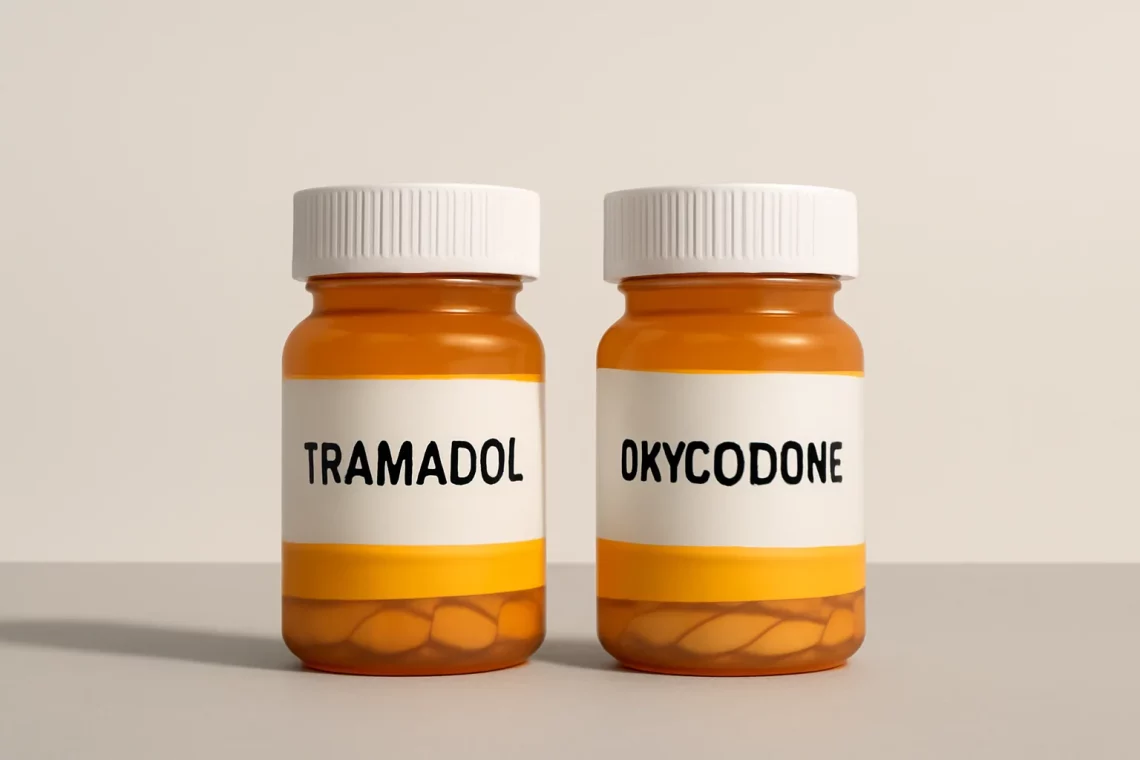
Tramadol vs Oxycodone: A Comprehensive Comparison of Pain Relief Options
Tramadol and oxycodone are two commonly prescribed medications used for pain relief. Both belong to the opioid class of drugs, which are known for their effectiveness in managing moderate to severe pain. However, they have different chemical structures, mechanisms of action, and potential side effects, making them suitable for different patient populations and pain management strategies. Understanding these differences is crucial for patients, caregivers, and healthcare professionals when determining the most appropriate treatment options.
In recent years, the conversation surrounding opioid use has intensified, with increased awareness of the risks associated with opioid dependency and abuse. This has led to the exploration of alternative pain management therapies as well as a deeper understanding of existing medications. Tramadol and oxycodone are often compared due to their similarities, but key distinctions may influence their use in clinical practice. As we delve into the nuances of these medications, it becomes essential to consider their pharmacological profiles, efficacy, safety, and the factors that should guide their prescription.
Understanding Tramadol
Tramadol is a synthetic opioid analgesic that is primarily used to treat moderate pain. It works by binding to the μ-opioid receptors in the brain, which helps to block the perception of pain. What sets tramadol apart from traditional opioids is its dual mechanism of action. In addition to acting on opioid receptors, tramadol also inhibits the reuptake of norepinephrine and serotonin, neurotransmitters that play crucial roles in pain modulation and mood regulation.
This unique mechanism gives tramadol some advantages, including a lower potential for abuse compared to stronger opioids. Tramadol is classified as a Schedule IV controlled substance in many countries, indicating that it has a lower risk of dependence than Schedule II opioids. However, it is still important for patients to be cautious while using tramadol, as misuse can occur, especially if taken in higher doses than prescribed.
Side effects of tramadol may include nausea, dizziness, headache, and constipation. Additionally, tramadol can cause seizures in certain populations, particularly those with a history of seizure disorders or when combined with other medications that lower the seizure threshold. Patients should be advised to inform their healthcare providers of any other medications they are taking to avoid potential interactions.
Despite its benefits, tramadol may not be suitable for everyone. Individuals with severe renal impairment or those who are pregnant or breastfeeding should use this medication with caution and under strict medical supervision. The efficacy of tramadol can also vary significantly among individuals, with some patients experiencing inadequate pain relief.
Exploring Oxycodone
Oxycodone is a potent opioid analgesic that is commonly prescribed for the management of moderate to severe pain, especially in patients who have undergone surgery or have chronic pain conditions. It is available in various formulations, including immediate-release and extended-release versions, allowing for flexibility in dosing and management of pain over time.
Unlike tramadol, oxycodone is a pure agonist at the μ-opioid receptors, which means it directly activates these receptors to produce pain relief. This mechanism makes oxycodone highly effective for pain relief, but it also contributes to a higher potential for abuse and dependency. Oxycodone is classified as a Schedule II controlled substance, reflecting its high risk for addiction and misuse.
The side effects of oxycodone are similar to those of other opioids and may include respiratory depression, constipation, nausea, and sedation. Patients using oxycodone should be monitored closely for signs of respiratory depression, particularly when starting the medication or increasing the dosage. The risk of overdose is a significant concern with oxycodone, especially when combined with other central nervous system depressants, such as alcohol or benzodiazepines.
Opposed to tramadol, oxycodone may provide more consistent pain relief for patients with severe pain or those who have developed a tolerance to other medications. However, this effectiveness comes at the cost of increased side effects and the need for careful management by healthcare providers. Patients should be educated on the importance of adhering to their prescribed dosage and the dangers of sharing medication with others.
Comparing Efficacy and Safety
When comparing tramadol and oxycodone, it is essential to consider both efficacy and safety profiles. Tramadol may be ideal for patients seeking a lower risk of dependence and those who respond well to its mixed-action mechanism. It may be particularly useful for patients with mild to moderate pain or those who have contraindications for stronger opioids.
On the other hand, oxycodone is often the medication of choice for more severe pain or in cases where patients have not achieved adequate pain control with tramadol or non-opioid analgesics. Its stronger opioid action provides rapid and effective relief, which can be crucial in acute pain situations.
However, the risk of addiction, overdose, and side effects with oxycodone makes it imperative for healthcare providers to assess each patient’s unique situation carefully. Factors such as the patient’s medical history, the severity of pain, and potential for substance use disorders should all influence the decision-making process.
Both medications require careful monitoring and follow-up. Patients on either tramadol or oxycodone should have regular consultations with their healthcare providers to evaluate pain control, assess side effects, and make any necessary adjustments to their treatment plan. Opioid stewardship is essential in minimizing the risks associated with these medications while maximizing their benefits.
Conclusion: Choosing the Right Medication
Selecting between tramadol and oxycodone involves a multifaceted approach that considers the individual patient’s needs, pain level, and potential risks. Both medications have their place in pain management, but their differences in mechanism, efficacy, and safety profiles make them suitable for different contexts.
Ultimately, the decision should be made collaboratively between the patient and their healthcare provider, ensuring an informed choice that prioritizes safety and effectiveness. Patients must be educated on the importance of adhering to prescribed dosages and be aware of potential side effects and signs of misuse.
In summary, while tramadol and oxycodone are both effective for pain management, the choice between them should be guided by a thorough understanding of their unique characteristics and the patient’s specific circumstances.
**Disclaimer:** This article is for informational purposes only and does not constitute medical advice. Always consult a qualified healthcare provider regarding any health concerns or treatment options.




